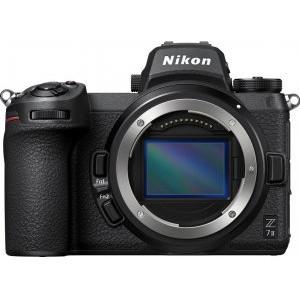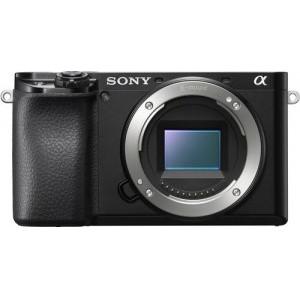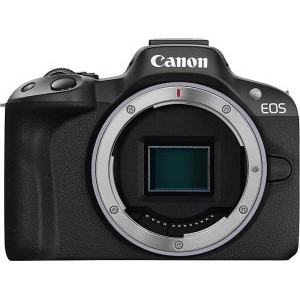


| Announced: | 31 Aug 2017 |
|---|---|
| Sensor Resolution: | 16Mp |
| Sensor Type: | 4/3 CMOS |
| ISO: | 200-25600 |
| Weight: | 410g |
| Physical Dimensions: | 122 x 84 x 50 mm |
| Viewfinder: | Electronic |
| Screen Type: | 3" Tilting |
| Video Resolutions: | 3840 x 2160 |

44

42

51

62

64
This post contains affiliate links and I will be compensated if you make a purchase after clicking through my links. As an Amazon Associate I earn from qualifying purchases.
 pros
pros cons
consThe Olympus OM-D E-M10 Mark III is based on the “Micro Four Thirds” technology, a system without the space for the mirror of the reflex and the pentaprism. The result is a small, compact and lightweight body, one of the greatest advantages of the Olympus OM-D E-M10 Mark III which is part of that “entry level” market segment, a mirrorless camera intended for beginners.
Compared to the previous model, the Mark III is not a hardware revolution but it’s a further step towards the type of consumer that comes from the smartphone experience. Proof of this is the presence of the Advanced Photo mode which allows the editing of images directly from the camera and a large collection of Art Filters, furtherly increased as compared to the Mark II.
Three years after its launch, the Olympus OM-D E-M10 Mark III offers a still sensor at 16mp, when it’s common to have (at least) 20. This is its major limitation. That said, the Mark III offers a great processor like the True Pic VIII, on which the Mark IV launched a few months ago by Olympus is also based. And then it allows video recordings in 4K up to 30fps and a 121-point AutoFocus (instead of the 81 of the Mark II).
The body of the Olympus OM-D E-M10 Mark III is very light and has a pocket size: 122 x 84 x 50 millimeters, for 410 grams (including battery) of weight. There are 20 grams more than the previous model, from which it takes the sober and austere design, very vintage, in which the knurled black contrasts with the silver (but there is also the full black version). The Olympus OM-D E-M10 Mark III is not tropicalized but once taken in hand, its magnesium alloy camera body offers a pleasant sensation of compactness, superior to several SLR cameras in the same commercial segment. Furthermore, from an ergonomic point of view, the E-M10 Mark III has been improved in grip, thanks to a deeper handle. The shutter button is easily reached with the index finger, just as it is to comfortably touch the selector in the rear position with the thumb.
The shooting mode dials are found on the right side of the top - larger than the Mark II’s - the exposure dials are located with the shutter button inside. A few millimetres away, there is the shutter / aperture dial, the Fn2 / x2 button and the one for video recording. Also, at the top, on the opposite side, is the flash lever and the quick menu button.
On the back of the Olympus OM-D E-M10 Mark III you find the LCD display , a 3-inch Touchscreen (720x480 resolution), which can be rotated in any direction except down (option added to the Mark IV). On the back we also find the multi-selector (ISO, flash, shutter mode, focus points) and, of course, the Electronic Viewfinder, an EVF OLED with 2,360,000 points already present in the Mark II.
Olympus OM-D E-M10 Mark III: main technical specs
Sensor: 4/3 '' 16.1 Megapixel Live MOS Sensor
Processor : TruePic VIII
ISO Low (auto) : 6400 (customizable upper limit from 200 to 25,600)
ISO Low (manual) : 25600 (can be set in 1/3 EV steps)
Autofocus (# AF areas) : 121
Video modes : 4K (3840 x 2160p) 30/25/24 FPS
Wi-Fi : Yes
USB : micro-USB (2.0)
Display : 3.0 ″ touchscreen LCD, 1040K dots
Memory : SD, SDHC, SDXC
Battery : Li-Ion (approx. 330 images, 50% with Live View )
Weight : 410g (including battery)
Dimensions : 122 x 84 x 50mm
For the Olympus OM-D E-M10 Mark III the AF points, contrast detection, have gone from 81 of the previous model to 121. In AutoFocus mode the system reacts very well, shooting accurately, even in low light (if you do not use much zoom). The problem with the AF - indicated by many reviews as the E-M10 Mark III's biggest flaw - becomes apparent when you want to track a moving subject. Even though the dot grid covers a large part of the frame, in fact, the contrast detection encounters some difficulties when it comes to keeping focus on subjects even though they are not very fast.
The 8.6fps burst is supported by a rather smart buffer and it is also faster than some competing cameras like the Nikon D5600 (5fps) or Canon EOS T8i. That said… the burst is closely related to the AF of the moving subjects, so performance beyond sufficiency cannot be expected.
Despite the “Micro 4/3” format, with a rather limited sensor, the Olympus OM-D E-M10 Mark III can provide printable images even in A3 format, without any major loss of detail. At 400 ISO the Jpeg images are very well defined, the details are remarkable although you can see a slight digital noise on the brightest parts. Up to 6400 ISO digital noise is not invasive, but beyond this setting in some parts of the images, we are talking about jpeg files, the colour will seem unnatural, as if it were distributed with small brush strokes. In other words, at ISO 12,800 and 25,600 the shots are good, if you keep the images for web use.
Battery life, with about 300 shots, places the Olympus OM-D E-M10 Mark III in between the entry level mirrorless, and just below the Fuji X-T20. Obviously, with over 800 shots, the Nikon D5600 offers another kind of autonomy. But we are talking about a reflex model.
The price first of all: on Amazon the Olympus OM-D E-M10 Mark III (with EZ M.Zuiko 14-42mm lens) has a price of 620 dollars , while the kit with two lenses (14-42 and 40-150mm ) can be purchased for 800 dollars . The Fujifilm X-T20, with XC 16-50mm lens, costs 1,140 dollars (or 1000 with XC 18-55 lens): a significant price difference, despite both cameras being entry level.
Is this a justifiable gap? Obviously, what makes the big difference is the X-T20's 24mp sensor, which is seen especially in the case of large format prints. The other differences concern AutoFocus and burst: the Fuji X-T20 can boast 325 AF points (instead of 121 on the Mark III) and a burst of 14fps (instead of 8.6). The technical differences between the two cameras are there and are not negligible, even if a gap of 360 dollars between the two models may seem exaggerated.
Based on these considerations… why buy the Olympus OM-D E-M10 Mark III? Obviously, it does not lack advantages: the elegant design and a robust camera body are superior to those of the competing SLRs in the same price range. And then the Mark III has the rare advantage of making everyone agree a little: the beginner will find it simple; the more experienced photographer will not be disappointed by its more advanced features. Finally, versatility: it is certainly not the best for sports photography, given its problems with the traceability of moving subjects, but if you are looking for a great camera for traveling, the Mark III will not disappoint you, offering the pocket format and a good photographic quality (without forgetting about the price, getting more and more interesting over time).
| Review | compare Olympus OM-D E-M10 Mark III with | overall score |  Portrait Portrait |
 Landscape Landscape |
 Sport Sport |
 Street Street |
 Everyday Everyday |
|
 |
OlympusOM-D E-M10 Mark III | 54 | 44 | 42 | 51 | 62 | 64 | $399.00 |
|---|---|---|---|---|---|---|---|---|
 |
NikonZ7 Mark II | 70 | 69 | 68 | 68 | 70 | 71 | buy on |
 |
SonyAlpha a6100 | 63 | 51 | 48 | 62 | 69 | 72 | buy on |
 |
PanasonicLumix DC-GH6 | 62 | 47 | 46 | 70 | 64 | 67 | buy on |
 |
CanonEOS R50 | 61 | 50 | 47 | 57 | 67 | 70 | buy on |
 |
CanonEOS M50 Mark II | 59 | 49 | 46 | 55 | 66 | 69 | buy on |
 |
FujifilmX-T200 | 59 | 49 | 46 | 57 | 66 | 68 | buy on |
The Olympus OM-D E-M10 Mark III is a mirrorless camera launched on 08/31/2017.
Technically speaking, the Olympus OM-D E-M10 Mark III ranks in the average of its category, scoring 54 overall. The Olympus OM-D E-M10 Mark III weights 410 gr and spans 122 x 84 x 50 mm. This means that it is particularly light and small, indeed one of the most handy options within its category.
Going into details, the Olympus OM-D E-M10 Mark III behaves better than average in its category for:
On the contrary, the performance of Olympus OM-D E-M10 Mark III is below the category average in:
However, the technical performance of your camera should be put in context. Indeed, depending on the type of photography you are interested in, each individual camera feature can impact your pictures to a different extent. This is the reason why we developed the iCamRank. iCamRank has been designed to weight all the individual technical specifications of each camera in the camerarace database, depending on different shooting conditions. Thus, here is what we suggest, depending on the photography type you like most:
Last but not least, the price. You can find the Olympus OM-D E-M10 Mark III sold on Amazon for a price comprised between 399.0 USD and 477.9 USD, which is in the average for this camera category.
Overall, Olympus OM-D E-M10 Mark III is a great value for money. If this is the kind of camera you are looking for, you should definitely consider buying it.
Sensor Type
CMOS
Sensor Size
4/3
Sensor Dimensions
17.4 x 13.0 mm
Sensor Area
226.2 mm2
Sensor Resolution
16 Mp
Max Image Resolution
4608 x 3456
Max Native ISO
25600
Min Native ISO
200
RAW Support

Manual Focus

Lens Mount
Micro Four Thirds
Number of Lenses
90
Focal Length Multiplier
2
Screen Type
Tilting
Screen Size
3.0"
Screen Resolution
1040Kdot
Live View

Touch Screen

Viewfinder
Electronic
Viewfinder Resolution
2360000.0
Viewfinder Coverage
100
Viewfinder Magnification
0.62
Min Shutter Speed
60s
Max Shutter Speed
1/4000s
Continuous Shooting
9fps
Shutter Priority

Aperture Priority

Manual Exposure Mode

Exposure Compensation

Custom White Balance

Image Stabilization

Built-in Flash

Flash Range
5.8
Max Flash Sync
-
Flash Modes
Auto redeye slow sync 2nd-curtain slow sync redeye slow sync fill-in manual off
External Flash

AE Bracketing

WB Bracketing

DxO Overall Score
DxO Color Depth
DxO Dynamic Range
DxO Low Light ISO
Multi-Segment

Average

Spot

Partial

AF-Area

Center Weighted

AF Touch

AF Continuous

AF Single

AF Tracking

AF Selective

AF Center

AF MultiArea

AF Live View

AF Face Detection

AF Contrast Detection

AF Phase Detection

Number of Focus Points
121
Number of Cross Focus Points
0
Video Resolutions
3840 x 2160 @ 30p / 102 Mbps MOV H.264 Linear PCM
Max Video Resolution
3840x2160
Video Formats
MPEG-4 H.264
Microphone Port

Headphone Port

Wireless Connectivity
Built-in
HDMI

USB
USB 2.0 (480 Mbit/sec)
Environmental Sealing

Water Proof

Dust Proof

Shock Proof

Crush Proof

Freeze Proof

Weight
410g
Physical Dimensions
122 x 84 x 50 mm
Battery Life
330
Battery Type
Battery Pack
Battery Model
BLS-50
Self Timer
Yes (2 or 12 secs, custom)
Timelapse Recording

GPS

Storage Type
SD SDHC SDXC (UHS-I II supported)
Storage Slots
1
Copyright 2024
EMA s.r.l.s. | p.i. 11740890014